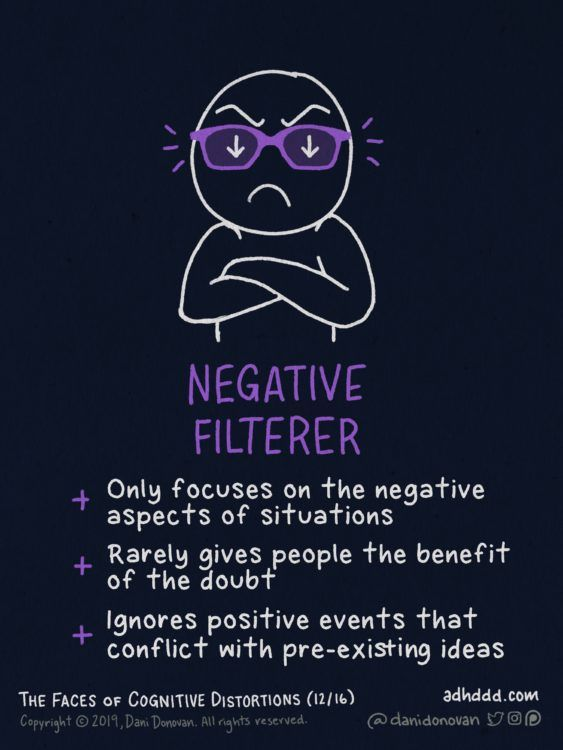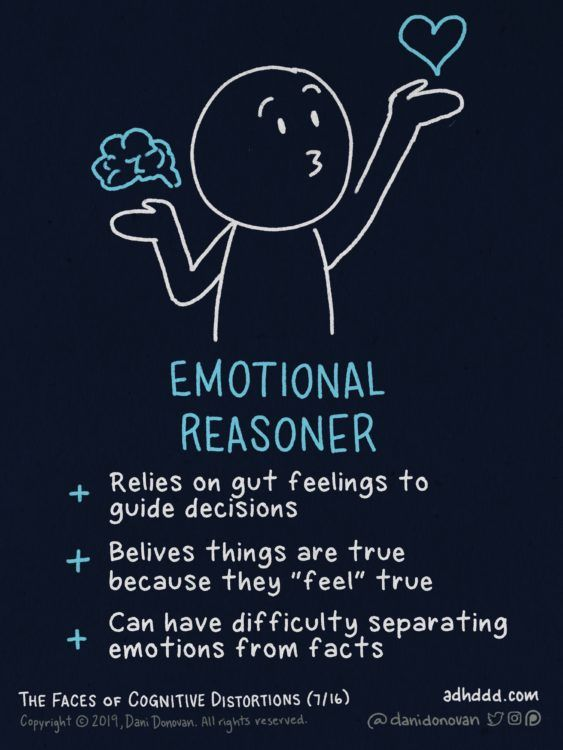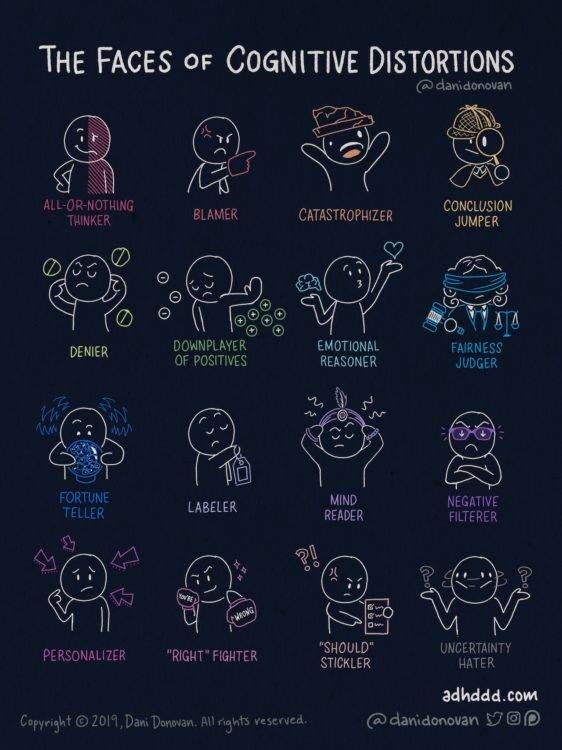10 Common Negative Thinking Patterns and 5 Steps for Change

Are you your own worst enemy? Do you find yourself getting bogged down by negative thoughts that seem to take over your mind, no matter how optimistic your circumstances seem?
Maybe you’re constantly worrying about “what-ifs” or start feeling anxious about the possibility of something bad happening, even when there is no real reason for you to feel that way.
If you’re constantly defaulting to negative conclusions, you may be suffering from negative thinking patterns in your thought process.
Negative thinking was a survival technique
All of us have moments where we think the worst and jump to conclusions, even when logic might show us no evidence that something bad will happen. We can’t help but think of only the worst.
It’s natural for our minds to search for the negatives. This likely dates back to primal times when humans had to be on high alert for wild animals and anticipate danger or threats - our survival depended on it!
Today in modern society, we don’t have to worry about our survival in the wild, but we often find ourselves overly stressed and anxious about life. If you’ve struggled with depression, stress, or anxiety, you understand how difficult it is to turn those negative thoughts into more positive ones.
The 10 most common negative thinking patterns
Aaron Beck, a US psychiatrist, recognized that there were specific patterns to negative thinking. As he met with his patients and allowed them to talk freely about their depression and struggles, he began to see 10 different types of negative thinking emerge.
These patterns are called “Cognitive Distortions” or “Distorted Thinking”.
Dr. Beck saw that his patients focused on distortions that were faulty and misinformed, which led to overwhelmingly negative feelings and conceptions in their life. “They are irrational thoughts and beliefs that we unknowingly reinforce over time,” he says. So, he wondered if his patients could learn to recognize their thought distortions and challenge them in order to heal.
As a result, he created a new therapy called Cognitive Behavioral Therapy or CBT. His goal with this approach was to guide patients into changing deeply held negative beliefs about themselves and the world, manage their depression, anxiety, and mental health issues, and take back control of their lives.
Ten Cognitive Distortions
While there are other therapists and researchers who have contributed to the development of Cognitive Distortions, the following 10 are the most common ones.
As you read through each distortion, notice if you find yourself defaulting to one or more of them.
1. All-or-Nothing Thinking
Seeing things in black-or-white. No shades of grey. If things aren’t perfect, you see them as a failure.
For example: You started a new diet, and for the first few days, you’re eating according to plan. And then, you have a sliver of apple pie. You berate yourself for not being perfect and tell yourself, “I’ve blown it, I might as well just eat the whole pie! I’m such a failure!”
2. Overgeneralization
One thing happens, and you believe that it “always” happens to you. Or you want something to happen, and when it doesn’t, you believe it “never” happens to you. These thoughts are upsetting and set up a cycle of defeat.
For example: You’ve asked someone out on a date, and they say no. Your automatic response is, “I’ll never find someone to go out with me.”
3. Mental Filter
Of all the things going well, you pick one negative detail out and focus all your attention on it.
For example: You received 20 feedback forms after facilitating a workshop. 19 of the forms were filled with positive statements about you and your work. One form noted that you could have managed the time better. All you thought about was that one “negative” statement while ignoring all the other positive feedback.

4. Discounting the Positive
You often feel inadequate or unappreciated because you ignore positive experiences.
For example: You sang beautifully on stage but told yourself it wasn’t good enough.
5. Jumping to Conclusions
How often have you jumped to a conclusion based on a feeling or thought without any evidence to support it?
Mind reading example: You seem to know exactly how someone is thinking. You often interpret an action or response and conclude that you’re not liked or that someone is angry with you.
Fortune-telling example: You already know you’re going to struggle with something before it has even started
6. Magnification/minimization
Your special magnifying glass can magnify an issue, making it bigger than it really is. Or you’re able to minimize the situation and your positive qualities.
For example: You agreed to pick up milk on your way home from work. With a lot of things on your mind, you forgot. In your mind, you become the most forgetful, unreliable, disorganized person there is!
7. Emotional Reasoning
This cognitive distortion allows you to believe that whatever you’re feeling, it must be so.
For example: You’re anxious about driving so you’ve concluded that driving is unsafe.

8. “Should” statements
You have a clear idea about how things “should” or shouldn’t” be. When they don’t turn out that way, we blame ourselves or others.
For example: “I should have done it my way instead of listening to you. It’s your fault it didn’t work out.”
9. Labelling
This distortion is like all-or-nothing thinking. You label yourself in a negative way when you’ve done something you or others don’t like. You don’t realize that you are not your behaviour. Similarly, when someone else does something you don’t like or makes a mistake, you label them, writing them off as if their behaviour is who they are.
For example: You give someone directions that turn out to be wrong. Instead of recognizing you’ve made a mistake, you label yourself – “I’m such an idiot!” Or, you give someone else a label when he/she disappoints you or makes a mistake – “She’s a liar!”
10. Personalization and blame
You hold yourself responsible for events or things you don’t have 100% control over. This distortion involves the blame game – when you blame something or someone else, you don’t have to look at your part in the situation.
For example: Your child gets into trouble at school, and instead of being curious about what happened and why, you blame yourself for being a terrible parent. Or, you blame others for your child’s challenges at school: “It’s the teacher’s fault that my child is in trouble. She’s a terrible teacher.”

5 steps to change your thinking
Our thoughts create our feelings. Changing our thoughts changes how we feel.
This simple and yet challenging formula is what will turn these Cognitive Distortions around. The strategies outlined below challenge each one so that you can begin to think more effectively and realistically. As you practice these, you’ll find yourself feeling better – about yourself and others.
Step 1: Identify Your Distortions
Keep a journal. As you become familiar with the 10 Cognitive Distortions, notice which ones you seem to favour. Writing down your thoughts and the corresponding distortions in your journal help you keep track of what you’re thinking about and how you’re feeling.
Step 2: Challenge Your Thinking
It’s important to challenge your thoughts because not all of our thoughts are true! As you write down your thoughts and the corresponding distortion, ask yourself: Is this really true? Do I know this to be true, for sure? Have I checked the facts?
Take a step back and assess the situation again. Continue challenging your thinking with other questions such as “Am I really a bad person?” or “Could it be that she was doing the best she could and just made a mistake?” or “When would this not be true?”
Step 3: Compassionate Self-talk
We are often extremely hard on ourselves. Our self-talk is harsh, negative, and sometimes abusive. When you think about how you would speak to a good friend, chances are you’d never say the things you say to yourself to your friend.
For each distortion you’ve identified, write down how you would respond to a good friend. Then, practice using this more compassionate self-talk with yourself.
Step 4: Seek Support
Find a friend or someone you trust to help you challenge your assumptions and distortions. The right questions can help you shift your perspective from black or white to shades of grey! Creating some flexibility in your thinking can help you lower your stress, feel less anxious and shift away from depression.
Step 5: Positive/Negative Outcomes
Self-assessment is key to finding the mental and emotional freedom you’re looking for as you challenge your own cognitive distortions. By asking yourself to assess the positive and negative outcome of sticking with your perspective, you’re able to decide whether it’s worth keeping or changing it.
Asking these questions will help:
- How will it help me or hurt me if I believe this distortion?
- Will it move me closer to being the person I want to be or farther away?
- If I dig my heels in and continue to believe this thought, how will it impact my relationship(s)?
- How do I feel about myself?
- Does believing this distortion help or harm my depression, confidence, self-worth, anxiety, etc.?
Challenging your cognitive distortions does take practice and patience, but I guarantee that your life will become so much better as you take control of your thoughts instead of allowing them to control you.
The Family Centre has the support and help you need to start on this journey. A mental health therapist can guide you along to change your thinking.
More resources:
This post was written by Joan Ridsdel
Joan Ridsdel is the founder and creator of W.I.S.E.R Woman Coaching and Personal Development. She is a Registered Social Worker & Food Freedom and Body Confidence Coach, specializing in helping women stop dieting so they can create a peaceful, free relationship with food and their bodies. Joan offers 1-1 and small group coaching sessions.
Contact Joan at:
Email Address: coach@joanridsdel.com
Website: www.joanridsdel.com
